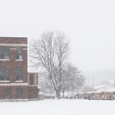We asked some expert teachers what they made a point of coming back to immediately after winter break. Here are their responses.
We always kick off the new year with chamber music. My students perform a solo and ensemble concert every February, and each student is required to play in a small ensemble and has the option to play a solo for this concert. The chamber music makes it impossible for weaker players to hide behind the stronger players. As each student gets stronger, the full band improves.
We are on a block schedule with 100-minute classes, so the first half of class is for chamber rehearsals, and we rehearse contest music during the second half. Because I cannot be everywhere at once, student leaders lead rehearsals, and I rotate between groups to ensure that the students stay on task. Students receive most of their contest music before winter break and must complete practice logs during vacation.
– Benjamin Helton, Bloom High School (Illinois)
I keep the movement between break and start of second semester as seamless as possible. A couple of days before the start of school, I email students a rehearsal schedule for the first week of the semester. My hope is that this is a friendly reminder of how much work there is to do the first week; we hit the ground running when we get back.
Before leaving school in December, I set up the rehearsal space so it is ready to go when we get back. The emphasis for the first day of rehearsal is heavy on breathing exercises, tuning, establishing a good ensemble sound. I spend at least double the time I would normally spend in the rehearsal to reestablish good habits, technique, and tone. On the personal side, when the semester is done, I can relax at home, building a fire and sitting in my recliner, and I do not have to worry about anything until school starts.
–Wally Parks, Metamora (Illinois) High School
After coming back from winter break my top priority is reestablishing the sound of the ensembles. After two and a half weeks of vacation, there are interesting sounds coming out of students’ instruments. Some of the more disciplined students will work diligently throughout out the holiday break, but many will not practice at all.
I have found a few exercises to be extremely beneficial when working on sound. I ask students to put their mouthpiece on or in their mouths, loosen the corners, and breathe in. They should feel a cold spot in the back of their throats if they are taking a deep, relaxed breath. After this, we breathe in again and play a concert F, listening to each other and trying to create a steady sound. I like to draw a brick on the board and ask the students to think of it as they try to blend their sound. If a particular section is sticking out I’ll draw a jagged edge and label it with the name of the section that sticks out. Students usually think this is funny but understand the concept a bit better at that point.
I also like to do an around-the-room exercise. I have one student play concert F and then we snake around the room with each subsequent student playing concert F while trying to match the tone quality and pitch accuracy. This is a great exercise because students who normally can hide at the end of the section have to play out. Everyone can tell when someone does not blend, and the peer pressure alone causes these students to play with a fuller sound. Once we play around the room, I ask the band which section played with the most consistent sound and which still needs to improve. The section that is deemed to need the most improvement then does the exercise by themselves. This additional isolated exercise helps students to hone in on their sound, and because the spotlight is still on them, they work extra hard to play with a good sound.
– Stephanie Silosky, Oswego (Illinois) High School
If you have a question you would like answered, email editor@theinstrumentalist.com





